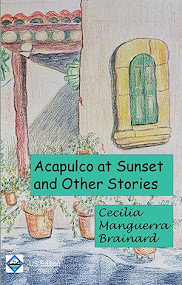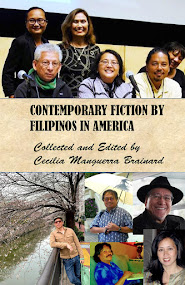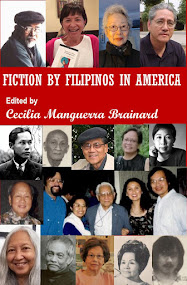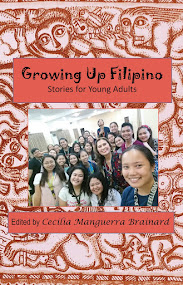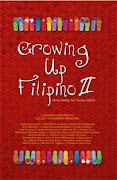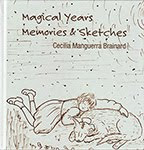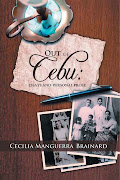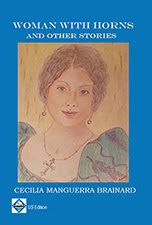 Song of Yvonne (or When the Rainbow Goddess Wept)
Song of Yvonne (or When the Rainbow Goddess Wept)
Possibilities of Humaneness in an Age of Slaughter
By Leonard Casper
(From Sunsurfers Seen From Afar Critical Essays 1991-1996, by Leonard Casper, Anvil 1996)
With each passing generation, Filipinos are more inclined to let slip from their collective memories the horrendous events of the Japanese Occupation fifty years ago. One result is that unwittingly, they become accomplices to the attempt of Japanese revisionists, in recent “historical” accounts, to deny that their war ministry ever dreamed of aggressive empire building and to assert that they were forced by American treachery to invade the Philippines. In addition, during nearly half of the “postwar period” Filipinos had had reason to examine violence done by themselves against their hopes of national fulfillment; and therefore to be grateful for gifts and loans from the financial giant which Japan has become since determining to leave war and the production of war materials to other countries. Who then would feel guilty of having no knowledge whatsoever of A.V. H. Hartendorp’s The Japanese Occupation of the Philippines, I and II (1967), or Teodoro Agoncillo’s The Fateful Years (also in two volumes, 1965), or Hignio de Uriarte’s A Basque Among the Guerrillas of Negros (1962), or Jesus A. Villamor’s They Never Surrendered (1982), or the many books about Bataan and Corregidor, the Death March, guerrilla action in Mindanao, liberation of survivors in Sto. Tomas and Los Baños, recorded by American writers? Only in the early 1990s did the United States begin to honor its battlefield promise of American citizenship to Filipino veterans, should they choose it. Nationalists were properly outraged by the protracted delay; but how many Filipinos themselves cared to know details of those war years, not out of perpetual thoughts of revenge or reparation, but so that lessons learned would not be lost; and so that the heroic or powerless dead would not be “killed again” by forgetfulness?
Faded from memory too is the fiction by those who personally endured the hardships, the soul-testing, of the early forties: such as J.C. Laya’s This Barangay (1950); Stevan Javellana’s Without Seeing the Dawn (1947); Edilberto tiempo’s Watch in the Night (1953), More than Conquerors (1964), and The Standard-Bearer (1984). More memorable perhaps are Wilfrido D. Nolledo’s But for the Lovers (1970; 1994) and F. Sionil Jose’s Ermita (1985) whose events flow largely from the rape of a Filipina by a Japanese soldier; but their seriousness may be lost on readers attracted only to their pungent eroticism.
Unlike these authors, Cecilia Manguerra Brainard was born, in Cebu, after the war. However her father was a guerrilla engineer, just as Papa is in Song of Yvonne; and both real and fictional fathers brought their families temporarily to Mindanao, to survive under the renowned Col. Wendell Fertig. Brainard has listened to “endless” anecdotes about the war, until she began to imagine herself the child Yvonne narrating this composite story. In her preface she laments the fact that “Unlike Filipinos, the Japanese are very good at immortalizing injustices to them”; they remember Nagasaki and Hiroshima, while Filipinos forget their own numerous dead, their own cultural as well as material wounds. Yet her principal motive in memorializing the days of wrath and wounds, Brainard says, is not to authenticate that victimization so much as thereby to dramatize the “triumph of the Filipino spirit over foreign oppression.”
She does not flinch from describing atrocities: the rape and mutilation of a nurse; the beheading of Doc Mendez’s family; the torture of a former governor, after his wife is shot and his sons bayoneted because he refuses to join the puppet government; the massacre of entire towns; the loss of limbs from booby traps. Other events equally terrible but not caused by the enemy are presented: Nida’s pregnancy, which results when she distracts a Japanese guard from imminent discovery of contraband in Mama’s possession; Bitong’s accidental severing of his toe with a bolo; Doc’s nearly fatal penitential self-crucifixion; the betrayal of guerrilla leaders by Martin Lewis, an American amok. Each episode is as carefully detailed as if the narrative were autobiographical. Yet Brainard prevents the novel from descending into either melodrama or polemic by maintaining young Yvonne as her singular narrator through, a gilr not yet in her teens. “I lived that terrible War through Yvonne,” she writes in her preface, meaning that in a special way she intended a story of innocence/naivete gradually tested and tempered but never wholly torn to shreds by a violence for which the close, simple family life in Ubec (Brainard’s code word for Cebu) could hardly prepare Yvonne. Even as the girl’s experience darkens and she realized that only a thin line separates night and day, death and life, the perspective of a growing child is faithfully kept. Adults are making war. Her share of its pain is naturally scaled down – except as she is constantly aware of and responding to the greater trials of her family or their friends.
It is this controlled resonance which raises Song of Yvonne even beyond its evident importance as a documentary of Visayan resistance to the Japanese invasion; and which adds an unexpected dimension to this story of ritual passage into premature adulthood. By the time of liberation Yvonne finds herself bleeding, and her mother explains to her that this is the beginning of her period. What is symbolized but not stated is the fact that blood, so recklessly shed in ambush and torture chamber, also signifies life and the promise of continuity. Her menstruation, for example, parallels Nida’s ultimate decision not to abort the child which rape has placed inside her; Biton’s determination to go on despite loss of a crucial big toe; crucified Doc Mendez’ near-death experience and “resurrection”; Engineer Macaraig’s vision of Ubec rebuilt, based on his understanding of even pre-history: “I saw people living in Ubec centuries before me and centuries after me – an endless parade of humanity through time. And I knew that invaders would not really destroy Ubec, could never destroy its people.” He is including self-interested Americans like Lewis among those who threaten the Filipino dream not just of nationalism but of peaceful, communal life. The question of excessive American interference (Lolo Peping and Gil Alvarez’ grandparents have all witnessed the atrocities and needless deaths of famine which occurred during the Philippine-American War) is treated forthrightly, though with forgiveness for those who later fought alongside the Filipino scouts and guerrillas.
What is acknowledged is that the resoluteness of Filipinos under fire is final proof of their loyalty not to American sovereignty but to democratic ideals of self-determination consonant with a viable Filipino nation. The Macaraigs and Alvarezes take no lasting in their victories; war weariness, both in conscience as well as in body, sets in early. Their sole wish is merely to return safely to one another, once more. Symbolic of the price of violence eve in self-defense is the loss of Doc Mendez’ strange ability to judge the health of his patients on the basis of colorful auras surrounding them, as he engages more and more in military action.
Though Yvonne herself understands that the prewar world can never be wholly regained (the lost eden theme common to much of Philippine literature), in the midst of change she senses the need to conserve/restore constancy drawn from the native culture’s narratives of faith. At first it is only curiosity which makes her listen to Laydan, the family cook, tell of her youth as a disciple of Inuk, singer of epic tales. Laydan herself once briefly became a singer of legendary events, until excessive pride stole her voice away because she failed to follow Inuk’s advice, to become the epic; to surrender self-image to folk feeling and need. But having been humbled by war, Laydan’s voice is restored by the serenity of the land. Meanwhile her stories of many-breasted goddess Meybuyan, mother to all those in need, and of woman warrior Bongkatolan who helped save the Ilianon tribe from rapacious Maguindanaos, teach Yvonne the means of comforting those who suffer and sorrow. When Laydan dies (apparently summoned by a companionate angel of death across a country river), it is Yvonne who chants the tale of Tuwaang and the Maiden of the Buhong Sky: the rainbow brings promise of sunnier days, after a giant creates havoc; the slain are raised to life through the application of betel juice. (In the 1992 U.S. edition the novel’s title became When the Rainbow Goddess Wept.)
Other mythic remembrances become similar counterforces to the horrors of war. Nida’s unwanted pregnancy moves Yvonne to sing of how Tuwaang rescued the Maiden of Monawon from Deathless Man by discovering his soul concealed in a flute and smashing it. When Yvonne finds the corpse of a Japanese airman and contemplates the possibility that he too might have a child at home, she sings of Lam-ang whose bones were reassembled after he was swallowed by a monster fish and his mother’s apron restored him to life. Later Yvonne distracts Cris, the distraught survivor of the Alvarez family, with the tale of Banna, turned into a python that restored to full humanity and to marriage by a stranger’s betel juice. Finally, at the time of liberation and the family’s return to Ubec City, Yvonne rediscovers Inuk’s vet originally given her on Laydan’s deathbed. Immediately the girl thinks of how the Ilianons, ravaged and dispirited by Maguindanao warriors, were resurrected and, by ship, guided by Agyu to a place of paradise, Nalandagan…
Like Laydan, Yvonne has become the spine and flesh of her people. They are her song. She is their future; the past recreated, recovered; her song is the spirit of healing, the resilience of trial/national memory that will not let essence die.
By splicing together folktale, family anecdotes, and the realities of slaughter mitigated by the possibility of humaneness, Brainard has herself become Yvonne; has become singer of the songstress who commemorates a people at their finest, in times at their worst; and Brainard has managed that singularity-rising -from-complexity by finally finding the proper form for images from her earlier work. Stories of Ubec previously occurred in Woman with Horns and Other Stories (1987) where however they were mixed indiscriminately with other sketches and anecdotes and where they were in careful disorder themselves. Several, for example, could have been arranged chronologically but were not. “1521” offers as Lapu-Lapu’s reason for killing Magellan revenge for the death of his infant son at Spanish hands. “Alba” is more acquiescent to the mixed heritage brought to the islands by Europeans when, during the English occupation of Manila in 1763, Doña Saturnina gives birth to a fair-skinned son who nevertheless is tacitly accepted by her husband. And in “The Black Man in the Forest” old guerrilla general Gregorio, seeking Macario’s troops for a linkup in 1901, kills an Afro-American soldier but, despite his own men being near starvation, does not allow the body to be cannibalized. The title story recounts how, in 1903, an American Public Health director/widower finds a renewal of interest in life with seductive widow Agustina whose flirtation, though unconventional, is considered less than scandalous. The postwar period is marked, in “Miracle of Santo Niño Church,” by Tecla’s dreams of the Japanese who bayoneted her family; the 1960s, in “The Blue-Green Chiffon Dress,” when Gemma has a brief encounter with a GI headed back to Viet Nam; and the updating, in “The Discovery,” of a Filipina’s torn loyalties between her American husband and a former Filipino lover who however, like her homeland itself, seems corrupted and ravaged by time. The remaining stories are less amenable to chronological sequencing, yet do reach toward one another through the recurrence of identical characters, as if in search of a novel form.
Brainard’s occasional control over her short story, combining quietude with certitude, perhaps is best exemplified by “Friday Evening at the Seashore,” in which a young priest tries to console a lovelorn girl without realizing that he is the object of her love and despair. In Song of Yvonne the author joins this reliance on restraint and the focus on Ubec to a growing girl’s plainsong, further dimensioned by a chorus of folk echoes finally heard as one irrevocable voice, one song of diversified unity that sings itself.
~end~
Read also
tags: Philippine literature, Filipino, author, writer, novel, fiction, World War II, Philippines, Cebu,
Cecilia Manguerra Brainard, Cecilia Brainard









